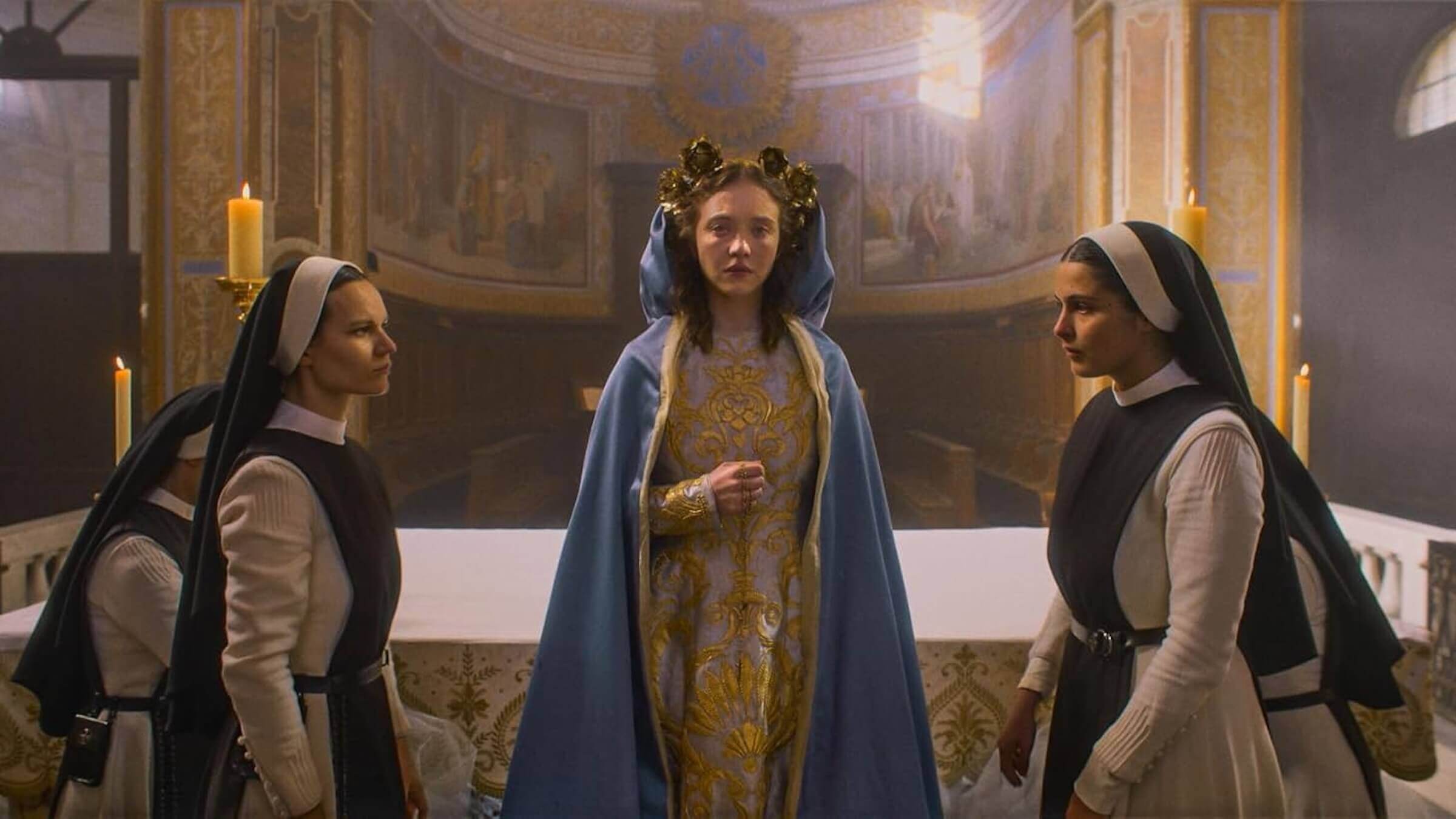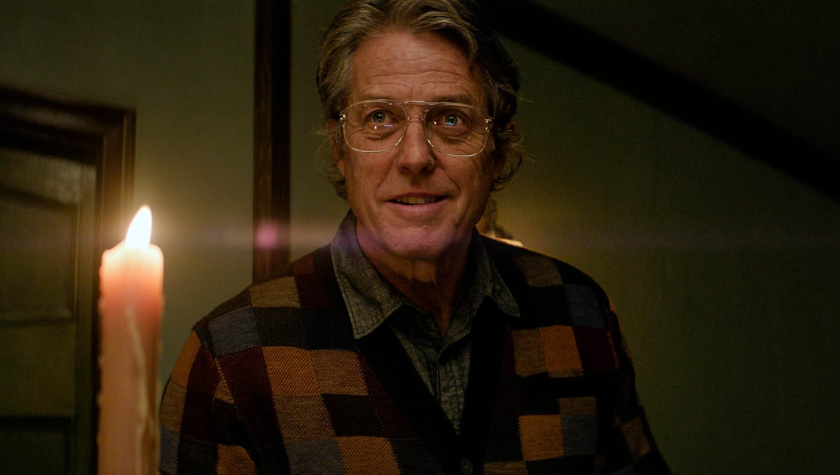Is ‘Apartment 7A’ Your Devilish Sign to Write a Satanic Horror Film?
July 19, 2024
After years of grappling with what to do with the 1968 classic Rosemary’s Baby, producers found a way to bring the evil incarnate back to the silver screen with Apartment 7A. Screenwriters Natalie Erika James, Christian White, and Skylar James shift focus from Rosemary (played by Mia Farrow in Roman Polanski’s movie) and her demon baby to a side character with a brief arc in the original film. How Terry (Julia Garner) fits into the Satanic cult in the Bramford apartments is still a mystery, but one thing is for certain: Satan is going through a cinematic renaissance.
From Late Night with the Devil to Longlegs to Apartment 7A, Satan has found himself at the center of these horror stories for the first time in a while. What’s going on? Why is everyone now itching to see the devil on the big screen? There are a few reasons for this Satanic panic...
Read More: How Longlegs’ Terrifying Marketing Teaches You to Craft a Great Villain
Screenwriters Work Hard, But the Devil Works Harder
This has been the year of Satanic horror films finding their focus falling onto female protagonists outsmarting a conservative religious culture attempting to please Satan. The crazy thing is that audiences are responding well to these stories.
Late Night with the Devil, a late-night talk show with a devilish twist, had a fittingly satanic opening weekend. The film came in 6th place at the box office and reported earnings of $666,666 on the Sunday of its opening weekend. Overall, the low-budget feature (and I mean low-budget) earned $12.4 million at the global box office.
If this wasn’t enough to summon the Devil, Sydney Sweeney’s religious horror movie about the Antichrist, Immaculate, became an indie hit with $27.4 million at the global box office. At the same time, Oz Perkins’s Longlegs, in which Satan’s influence pushes the plot forward, became a global box-office darling with $33.3 million. Those are good enough numbers to incite more people to summon Satan for a few more feature films, including the upcoming Apartment A7.

'Late Night with the Devil' (2023)
Satan’s Place in Modern Movies
From Georges Méliès’s first short film in 1896 to the religious fervor that spread after William Friedkin’s The Exorcist, Satan’s role in cinema has always been popular. According to Giving the Devil His Due: Satan and Cinema, editors Jeffrey Andrew Weinstock and Regina M. Hansen write that films starring Satan “ask us to imagine a world governed by different principles,” and audiences watch these films because they “affirm our worldview.” Or, as Wes Craven told The Exorcism of Emily Rose director Scott Derrickson, people already feel scared when they go to horror movies and want to leave believing their fears can be contained and resolved.
These movies often present a clarified moral framework: there is good and bad, and the distinctions are clear. These films often paint complexities in black and white, attracting viewers who want to be entertained and see the consequences of someone's decision to work with Satan.
But why is Satan back in the star role of the biggest and most recent horror films? Many film scholars suggest that the rise of the Devil aims to promote Christianity through entertainment. Film critic Pauline Kael called The Exorcist "the biggest recruiting poster the Catholic Church has had since the sunnier days of Going My Way and The Bells of St. Mary’s." However, the modern portrayal of Satan serves as a warning against playing with malevolent forces.
Apartment 7A highlights this idea as Terry receives a promise of a second chance at a successful career, but she must become impregnated by Satan. Those of us who have watched Rosemary’s Baby know what path Terry might choose, but the mystery surrounding how involved Satan is in her decision-making is what engages the audience. That is really the appeal of horror: we see our fears play out, see the mistakes to avoid, and our morality is reaffirmed.
.jpeg?width=1100&height=619&name=Apartment%207A%20(2).jpeg)
'Apartment 7A' (2024)
How To Make the Devil the Star of Your Next Satanic Horror Film
Writing a movie that makes Satan the star is a delicate craft because Satan has to work through the narrative rather than be at the forefront. The Devil’s work is often doing all of the dirty work underground, away from the prying eyes who might notice what is really going on.
Luckily, there are tropes in horror films that feature the devil for screenwriters to use:
- The moral choice
- A tormented family
- The possession of innocence
- Focus on religious iconography
- A priest performs an exorcism
- An expert comes in
There are many ways to incorporate these tropes into your story. Whether advocating for the well-being of others through personal gain or showcasing Satan’s role and demise, these elements can greatly influence the entertainment value of your story. Most people will want to see the devil defeated, but the extent of pain and suffering endured to ensure evil loses adds to the drama.
Modern films with Satan are subverting these tropes in fun and fresh ways. In Immaculate, Sister Cecilia (Sweeney) becomes a final girl who claws her way out of Hell and smashes the Antichrist with a rock—who needs a priest anyway? While Damien is born in The First Omen, Margaret (Nell Tiger Free) continues her fight against the Devil, unable to trust the church and its motives. Even Tony (Russell Crowe), an emotionally tormented single father recovering from addiction, subverts the innocence trope as he becomes possessed by the Devil and torments his daughter and a film crew in The Exorcism.
The great thing about Satanic horror films is that the Devil provides endless opportunities to play with tropes and genres, allowing for original stories with a familiar face. However, these films typically end with the Devil's defeat and good prevailing over evil, which is the general expectation that excites audiences.

'The Exorcism' (2024)
—
Satan has always been a horror icon but is not limited to this genre. The Devil is the embodiment of evil and can test the morality of your characters and the audience. Apartment 7A may not be reinventing the wheel when it comes to Satanic horror movies. However, the movie could provide the moral dilemmas and physical scares that audiences expect from this subgenre of horror.
Read More: Write On: 'The First Omen' Writers Arkasha Stevenson and Tim Smith
Written by: Alyssa Miller
Alyssa Miller is a passionate writer, editor, and educator with a deep love for storytelling. She holds a Bachelor of Arts in English with a minor in Communications from the University of San Francisco and has extensive experience as a freelance writer, specializing in entertainment and film education. Her work has appeared in renowned publications such as Britain's First Frame, No Film School, Industry Arts, and Final Draft. In addition to screenwriting, Alyssa shares her insights on the latest releases through her YouTube channel (@alyssawatchesmovies), reflecting her unwavering dedication to the art of storytelling.- Topics:
- Screenwriting & Craft




